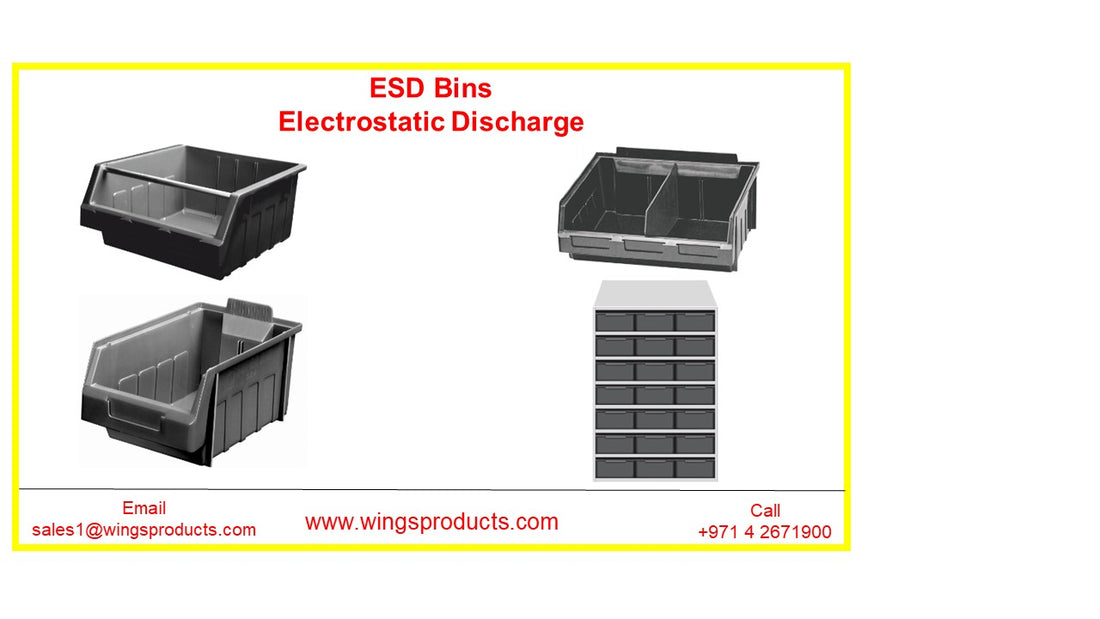Why do we need ESD Bins
Every year, static electricity causes billions of dollars in losses due to it not being controlled adequately in areas where microelectronic parts are manufactured, assembled, stored, and shipped. Both humans and objects generate static charges, and all microelectronic parts are affected by the electrostatic discharge.
Therefore protection of electronic parts and components from electromagnetic interference or electrostatic induced fields using ESD conductive plastic bins is crucial. When you need to store static-sensitive electronic parts that are going to be used in Electrostatic Protected Areas (EPA), ESD bins are the most reliable option. ESD storage bins lessen the risk of damage from electrostatic discharge, making it easier to handle, transport, and store static-sensitive components and materials.
How to control static electricity
Charge production is the result of two surfaces coming in contact and separating from each other. Since containers rub against different materials, charge generation is a significant problem.
It’s a fact that we cannot eradicate static electricity, and it is a part of nature. We can only control it in these three ways:
- By reducing the potential for generating static discharges by removing static producing material
- By shielding static-sensitive parts and assemblies
- By ensuring a safe path to the ground to prevent the accumulation of charge
Selection of ESD Bins
Durability, size, and style are the major mechanical physiognomies of an ESD bin. Shaping these features is more than just a matter of selecting a container big and sturdy enough to take the devices in question.
Style and size affect the efficiency with which plant space is used, as well as compatibility with automated handling equipment and other factors. A container significantly more significant than the device(s) it must hold during transport or storage can increase labor costs and reduce the workshop. So is a container that is too small to hold a reasonable number of items.
An ESD bin should be designed for the items it will contain, taking into consideration of the handling system to be used. Style to be used is determined by the area where it would be used and the handling system. In a static-controlled setting, a cover may be optional, while in an open space, it is a necessity.
All of these are good practices in general, and they help avoid damages that might occur as a result of casual contact. In some handling situations, a removable cover might be necessary for programmed insertion and removal of parts. In other situations where assured closure is needed, an attached cover would be the better choice.
Manufacturing of ESD Bins
ESD bins are manufactured from polypropylene (PP) with conductive soot material that avoids the buildup of electrostatic charge and gives the bins its black color. They are permanently conductive and are not affected when washed with regular cleaners. ESD storage bins are used in data centers to store and protect microchips, circuit boards, circuit cards, assemblies, motherboards, hard drives, capacitors, transistors, logic chips, SCSI drives, spare CPUs, spare DRAM drives, flash memory, SSD drives, video cards, GBIC modules, and other semiconductor components.
